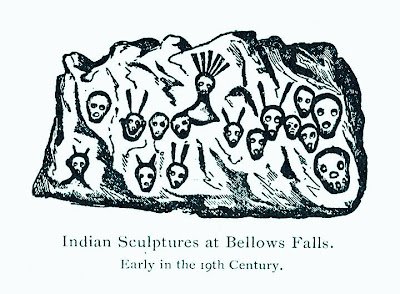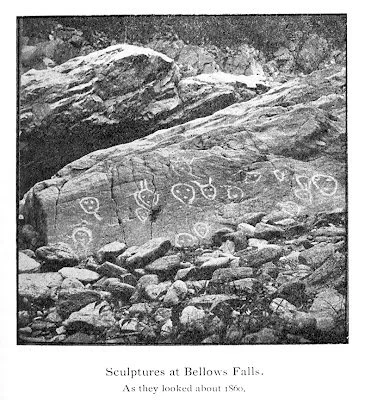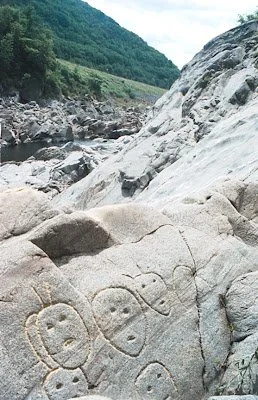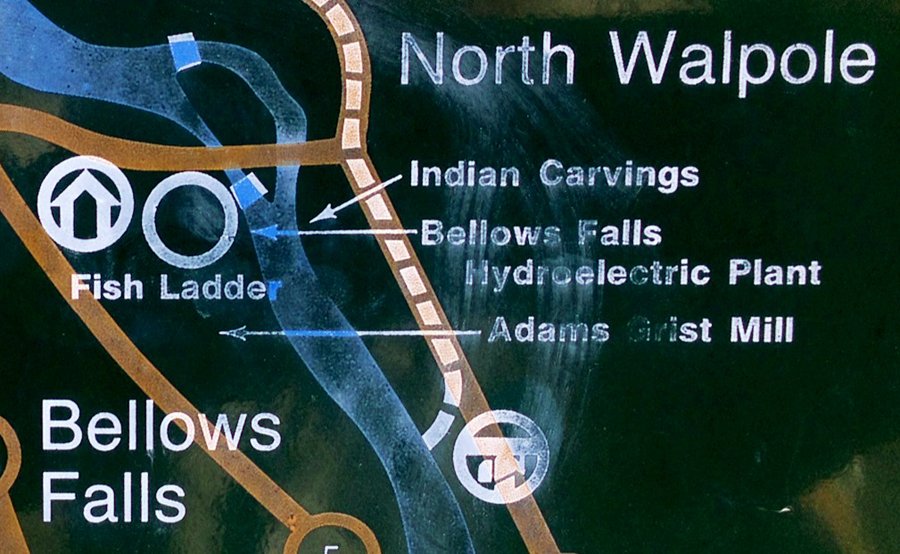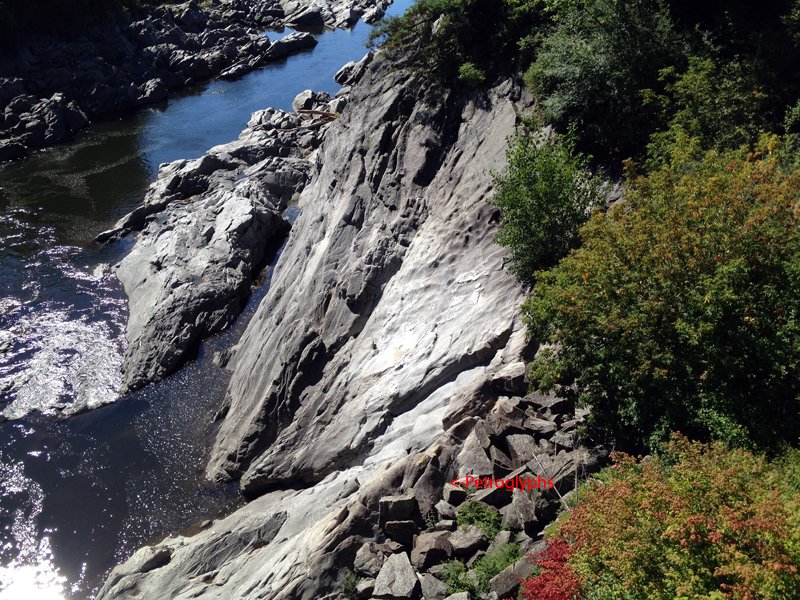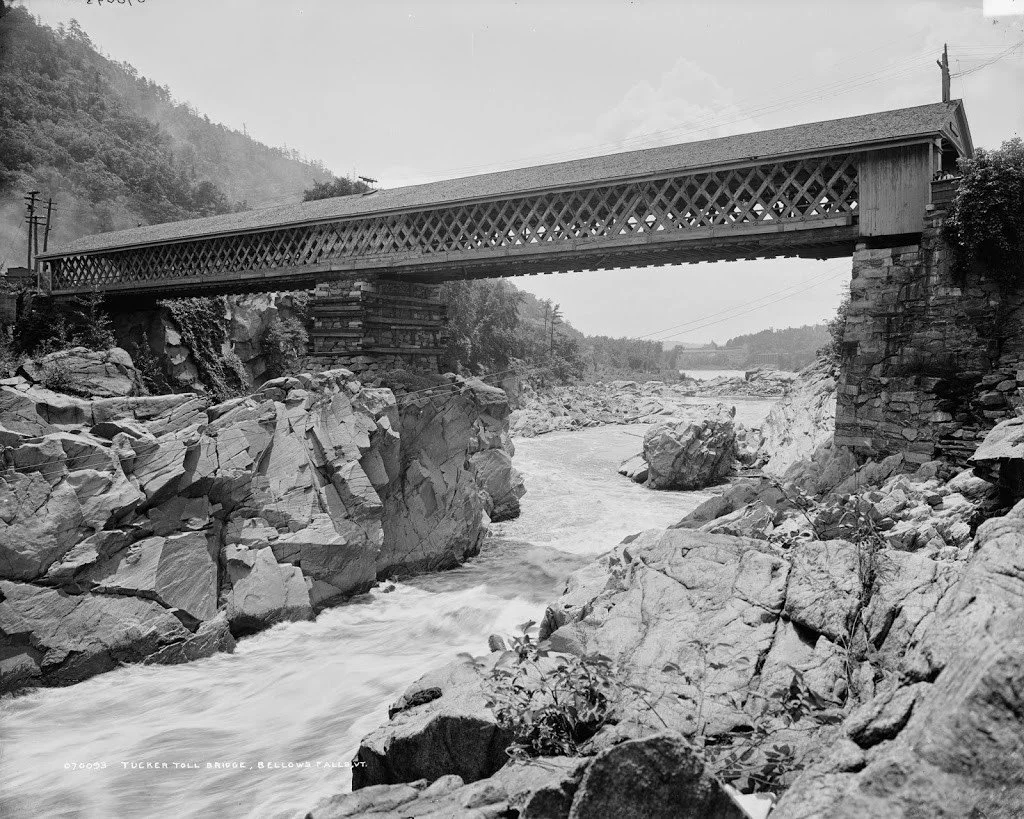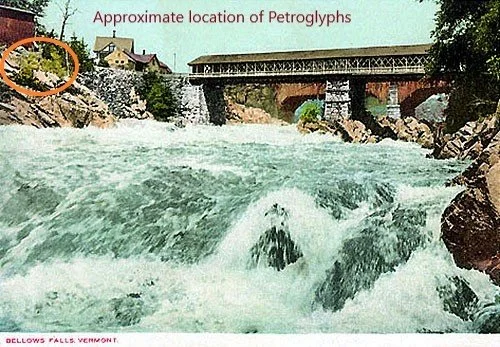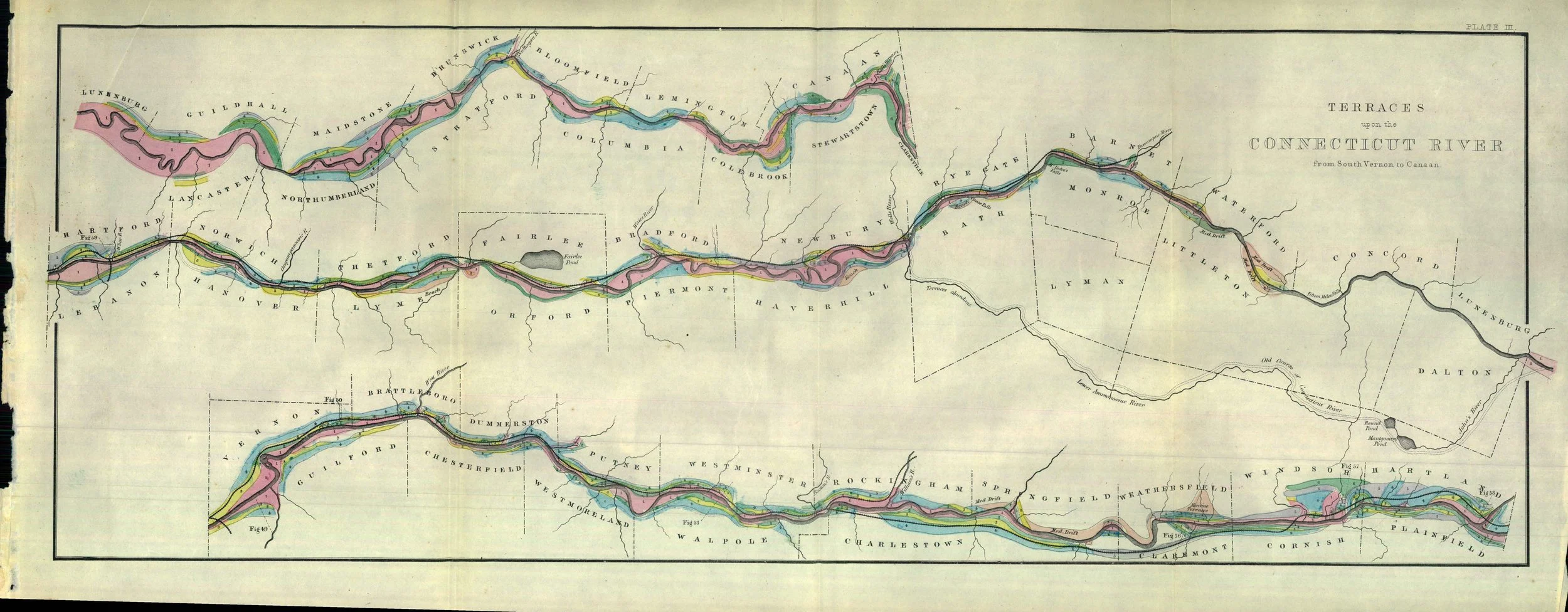Kchi Pôntegok – Revisiting the Historic Landscape of the Bellows Falls Petroglyphs
In the language of the Indigenous Western Abenaki Kchi Pôntegok (pronounced kit SEE POHN tuh guk) means "at the Great Falls," hence inspiring the name of the Kchi Pôntegok Project. The undertaking is a partnership between the Abenaki Elnu Tribe Atowi Project and the Town of Rockingham’s Historic Preservation Commission with goals to affirm the sacredness of the Bellows Falls Petroglyph Site, address cultural representational inequalities, and prepare an amendment of the documentation for this site in the Bellows Falls Island National Register of Historic Places (NRHP) nomination. As the project progresses and in consultation with Vermont SHPO and the Vermont State Archaeologist the decision may be made to prepare a new, individual NRHP nomination.
For the Indigenous Western Abenaki of the mid‐Connecticut River Valley in what is now western Massachusetts, Vermont, and New Hampshire, petroglyph sites are sacred, regarded as the nexus of historical and modern social and spiritual realms. Kchi Pôntegok has particular importance to the Western Abenaki due to its location overlooking a turbulent set of falls, extensive Indigenous burying grounds directly adjacent (west) of the petroglyphs, and several nearby habitation sites to the east. There are few petroglyph sites identified in the northeastern United States, and the anthropomorphic designs present at Kchi Pôntegok are particularly important because they (1) are associated with a set of natural falls, (2) contain a “horned‐head” design that may correlate with other shamanistic motifs identified elsewhere in the Northeast, and (3) may convey information about group identity and territory boundaries, ideology, social structure, and other cultural elements.
The site is located at the Great Falls along the Connecticut River in Bellows Falls Village in the town of Rockingham, Vermont. Kchi Pôntegok is identified in the State of Vermont’s archaeological site inventory as VT‐WD‐8 and in the NRHP as the Bellows Falls Petroglyph Site, reference #88002166. It is contributing site #14 in the NRHP/Bellows Falls Island Multiple Resource Area, listing date 01‐22‐1990). Since the 1980’s when research of the Petroglyph Site was undertaken to establish significance as a contributing site to the NRHP nomination, new ethnographic and historical study has revealed greater detail and new ways of understanding and interpreting the carvings. Methodologies employed by the Kchi Pôntegok Project include a review of current scholarly literature, archaeological field research, collection of oral histories and traditions, and archival research. The project broadens general knowledge and education about the petroglyphs. The intent is to raise awareness of their place as an anchor in a sacred landscape. The project will be driven by comprehensive Indigenous consultation and contextualization, in the spirit of an NHPA Section 106 Traditional Cultural Landscape review to form a cohesive landscape of significance to the Indigenous Western Abenaki Tribe.
The Kchi Pôntegok Project is funded by the National Park Service Underrepresented Communities Grant Program.
Progress Reports
National Park Service Underrepresented Communities Grant - First Progress Report (December 29, 2022)
National Park Service Underrepresented Communities Grant - Second Progress Report (June 29, 2022)
National Park Service Underrepresented Communities Grant - Third Progress Report (December 29, 2023
The content and opinions on this page do not necessarily reflect the views or policies of the Department of the Interior, nor does the mention of trade names or commercial products constitute endorsement or recommendation by the Department of the Interior.
Regulations of the U.S. Department of the Interior strictly prohibit unlawful discrimination in federally assisted programs on the basis of race, color, national origin, age or handicap. Any person who believes he or she has been discriminated against in any program, activity, or facility operated by a recipient of federal assistance should write to: Director, Office of Equal Opportunity, National Park Service, 1849 C Street, NW, Washington, DC 20240.

